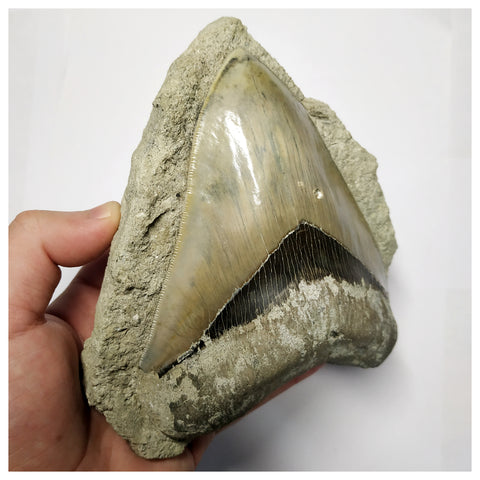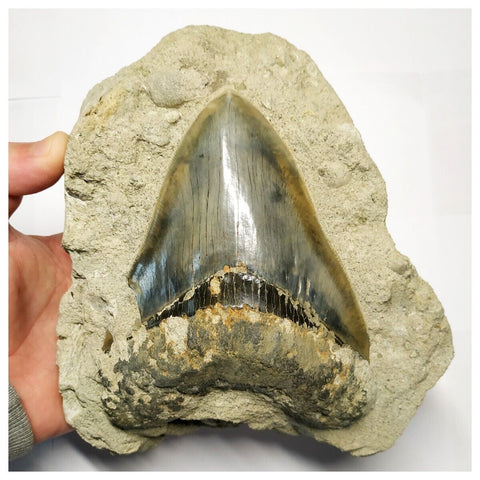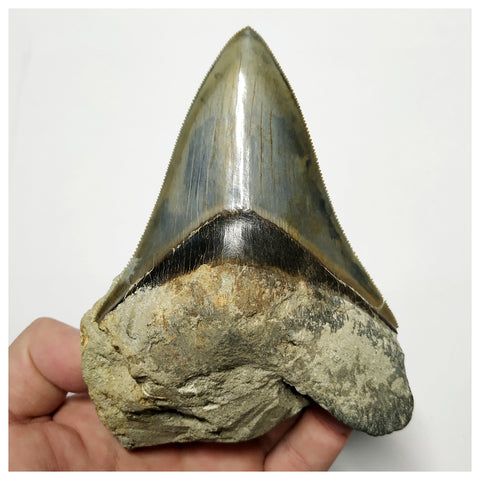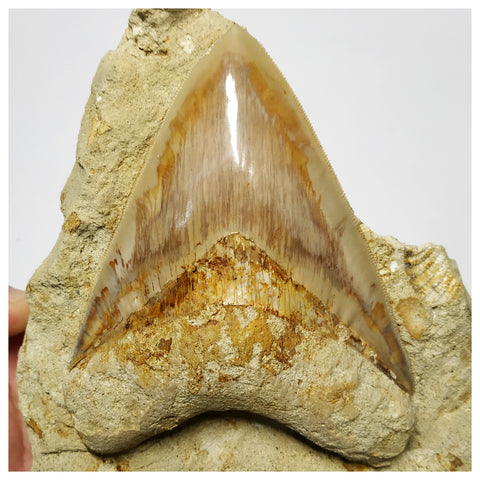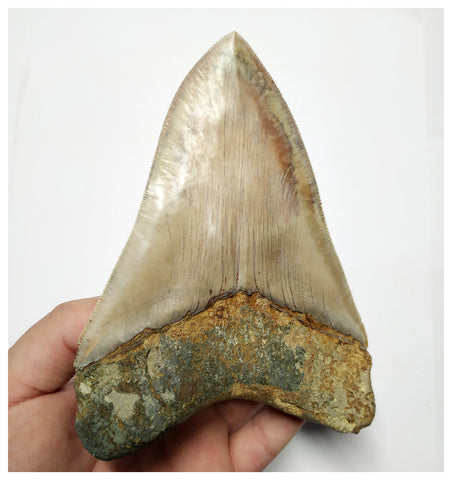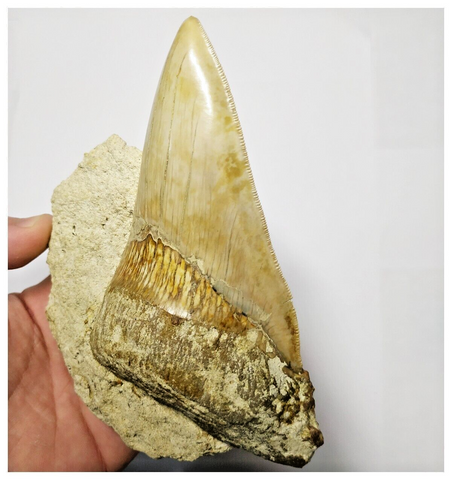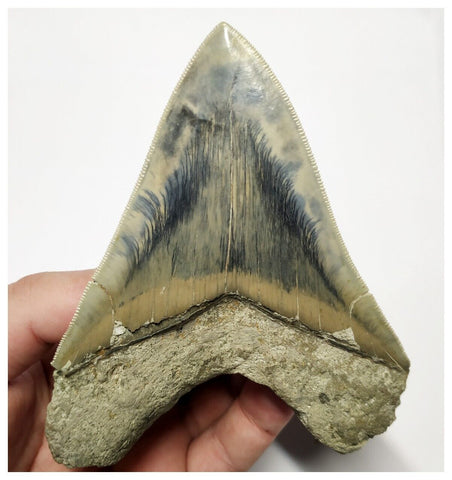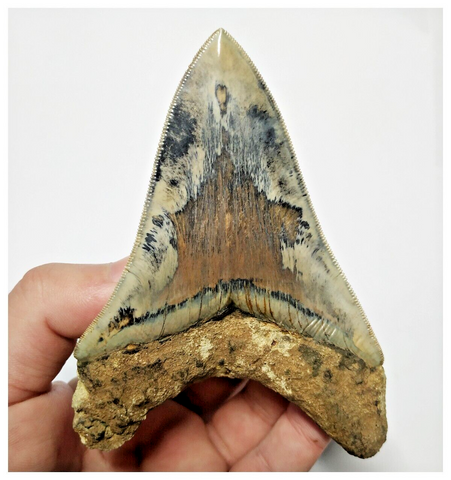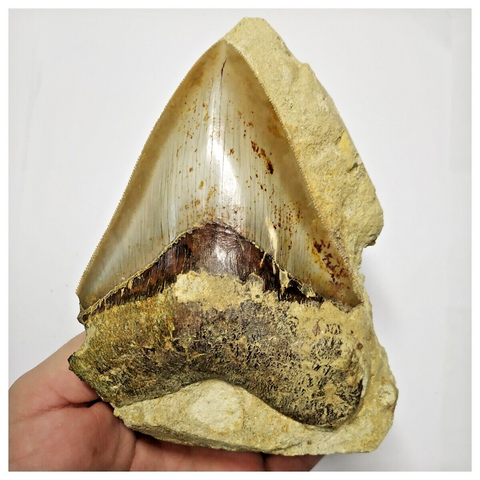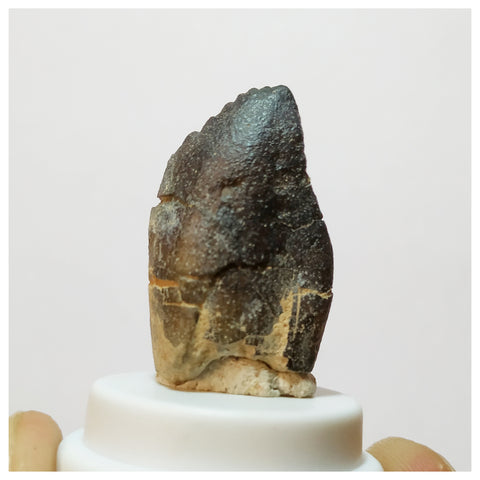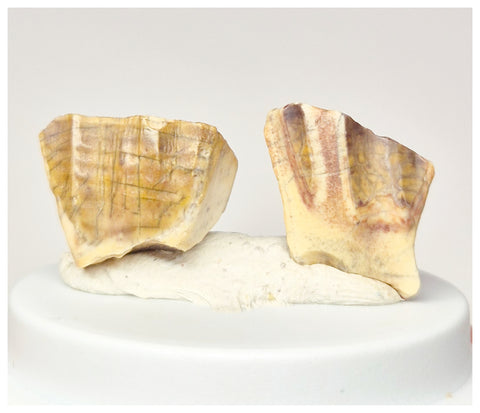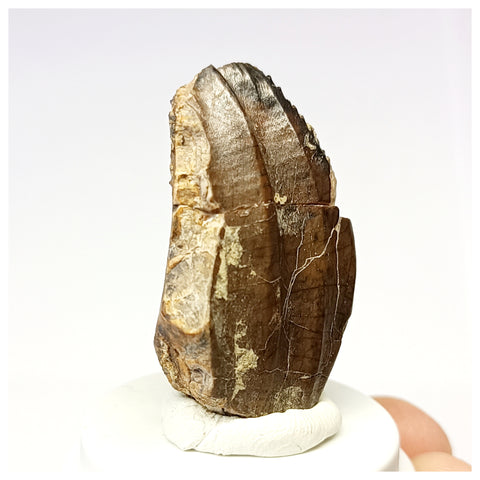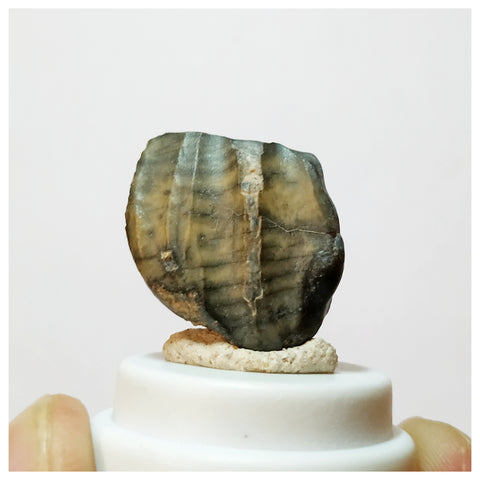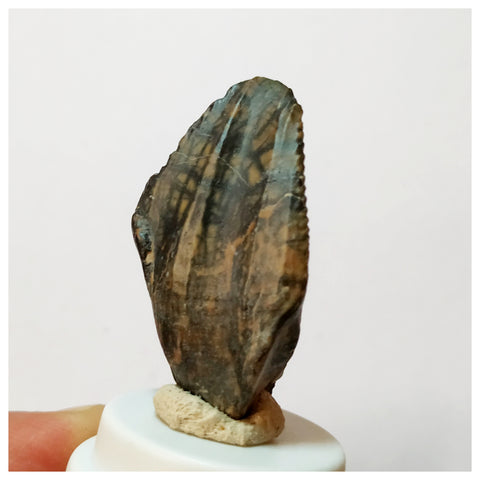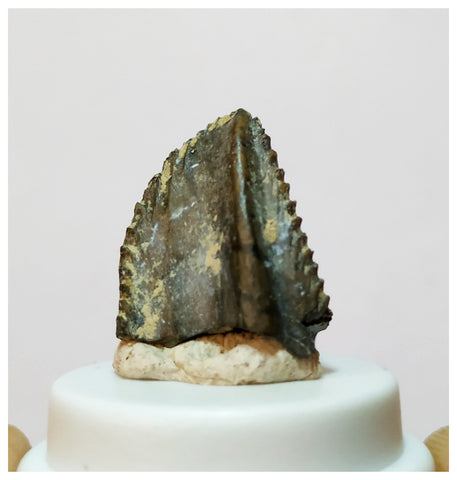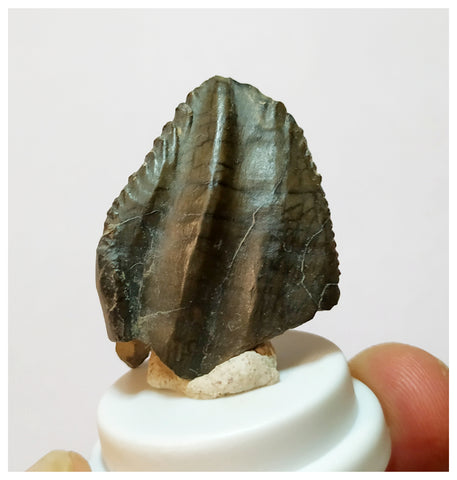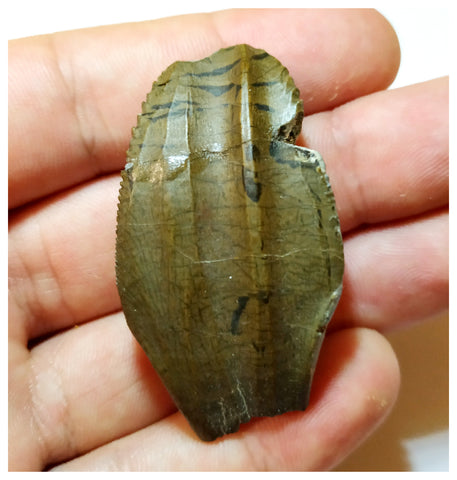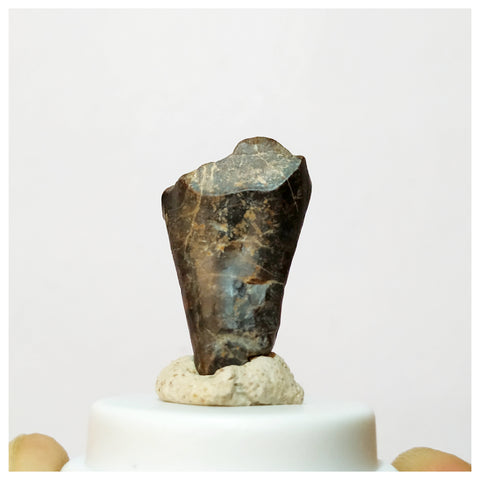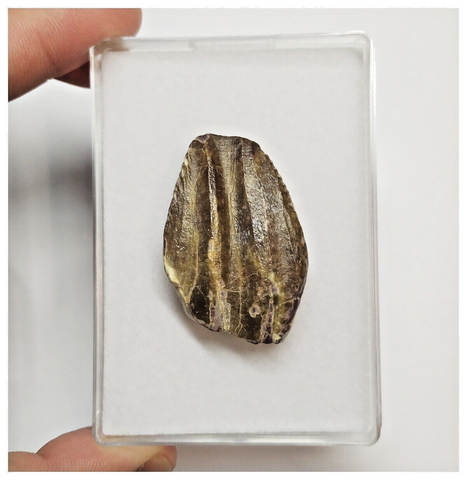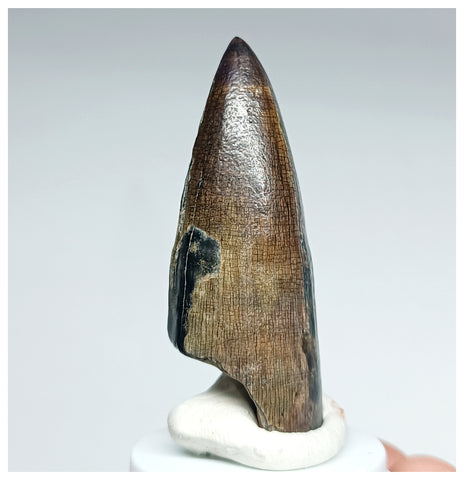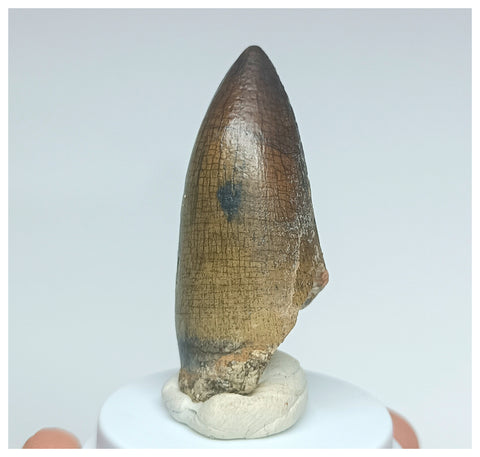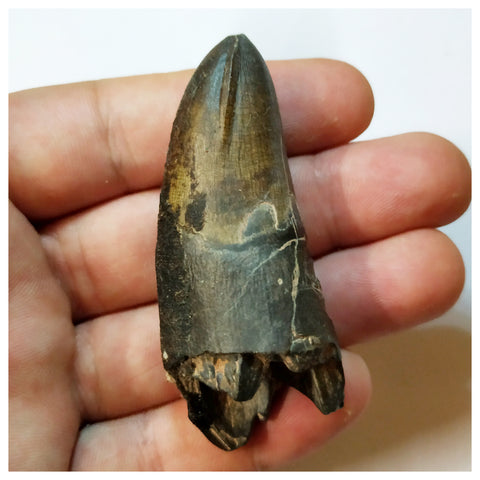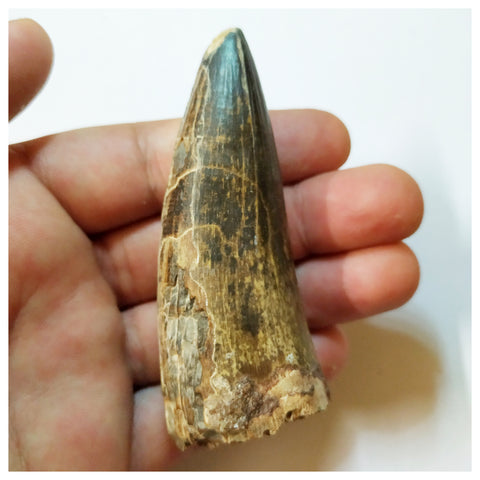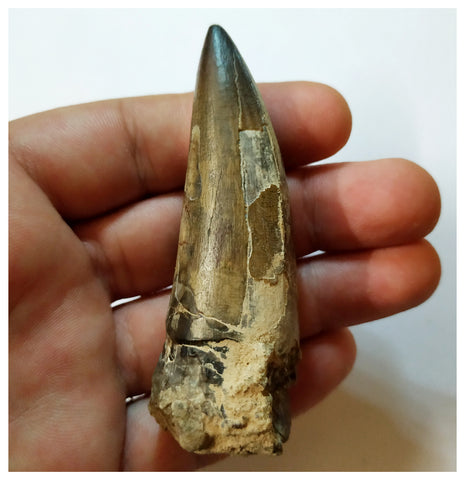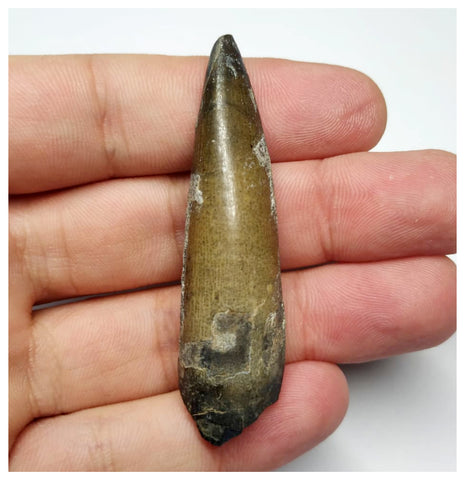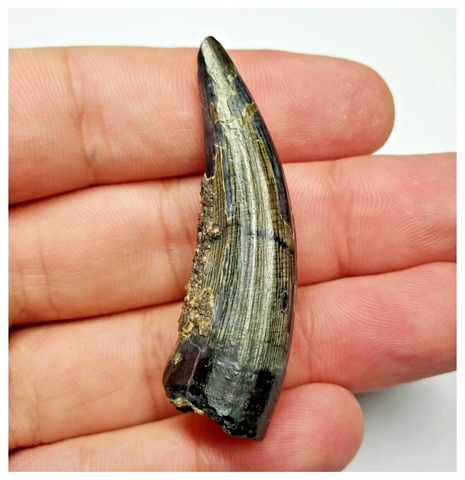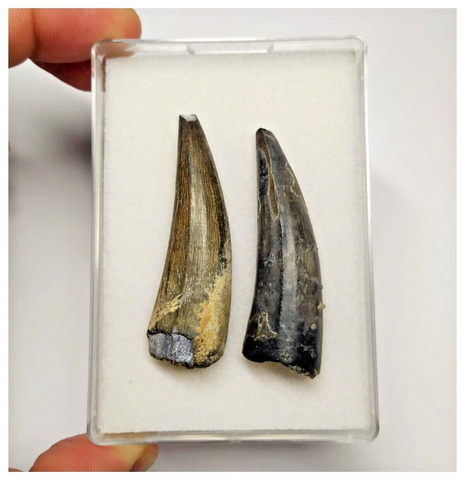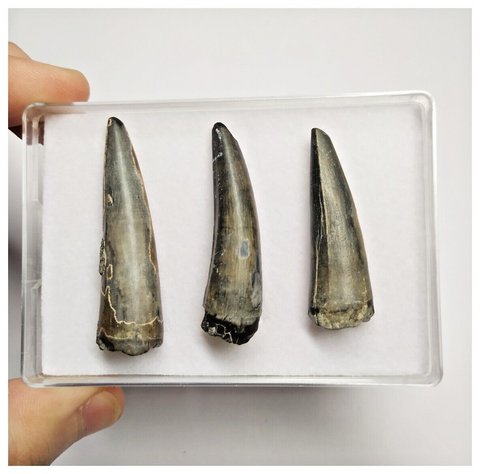Scientific name: Carcharodontosaurus saharicus, Depéret and Savornin 1925
Location: Taouz, Errachidia Province, South Morocco
Geological Formation: Ifezouane Formation, Red Sandstone Beds, KemKem Basin
Age: Upper Cretaceous, Cenomanian stage, (~96 Million Years)
Size (long the biggest): 2 cm
REF.: #1162
DESCRIPTION:
Beautiful lovely pristine juvenile specimens. Finest Grade.
Carcharodontosaurus teeth are relatively easy to find in the North African Cretaceous sites. However, their excellent preservation is something much more difficult to find.
The teeth with strong and vivid fossilization colors such as red, orange and black come from small paleochannels composed by thin layers, in the intermediate and upper stratigraphic levels (Red Sandstone Beds), from the Ifezouane and Aoufous Formations (Kem Kem Basin, South of Morocco). The lithology of this body of sediment is characterized by the dominance of sandstones (also known as arenites) and fluvial gravel, of siliceous nature. Sometimes large concentrations of iron oxide are present, and then a small sample of that is usually present at the base of the tooth.
These mineralizations are responsible for the wide range of beautiful reddish color tones, slowly drawn during millions of years via fossil-diagenetic processes. The complicated sedimentarian architecture of the layers where most large vertebrates are found makes the excavation methodology a real challenge.
Sometimes the local miners have to excavate long tunnels that follow the distribution of the fossiliferous layer. Carcharodontosaurus is a genus of carnivorous carcharodontosaurid dinosaurs that existed between 100 and 94 million years ago, during the Cenomanian stages of the mid-Cretaceous Period. It is currently known to include two species, C.saharicus and C.iguidensis, which were among the larger theropods, as large as or slightly bigger than Tyrannosaurus and possibly slightly larger than Giganotosaurus, but not quite as large as Spinosaurus.
The different Geological Formations that make up the orography of the Cretaceous in the South East of Morocco have been mostly treated in an undifferentiated and not too accurate way by collectors, by Paleontology aficionados and by fossil dealers.
Historically, fossils dealers from all around the world have identified the dinosaur pieces from this sector as belonging to the Tegana Formation. However, in a formal way, most of the last published studies refer to other nomenclature in the description of the units and formations of the Lower and Upper Cretaceous.
That's why next we include an interesting link where the Aoufous Formation and the Ifezouane Formation are described, making reference to their age, geological history, sedimentology, stratigraphy and vertebrate assemblage. It includes a brief explanation of the stratigraphic concepts that have been established formally until today in the studies of this sector of Morocco.

Picture: Geological contextualization of North Africa outcrops: "First report on Cretaceous vertebrates from the Algerian Kem Kem beds. A new procoelous salamander from the Cenomanian, with remarks on African Caudata" Tannina Alloul et al., 2018.

Picture: Geological map and statigraphic section of KemKem Cretaceous outcrops "Taxonomic Composition and Trophic Structure of the Continental Bony Fish Assemblage from the Early Late Cretaceous of Southeastern Morocco" Cavin L et al., 2015.
This way, the precise stratigraphic understanding of the origin of the rests, as well as the sedimentological analysis, enables a better paleoecologic characterization of the environments where this amazing dinosaur assemblage lived.
Aoufous Formation









